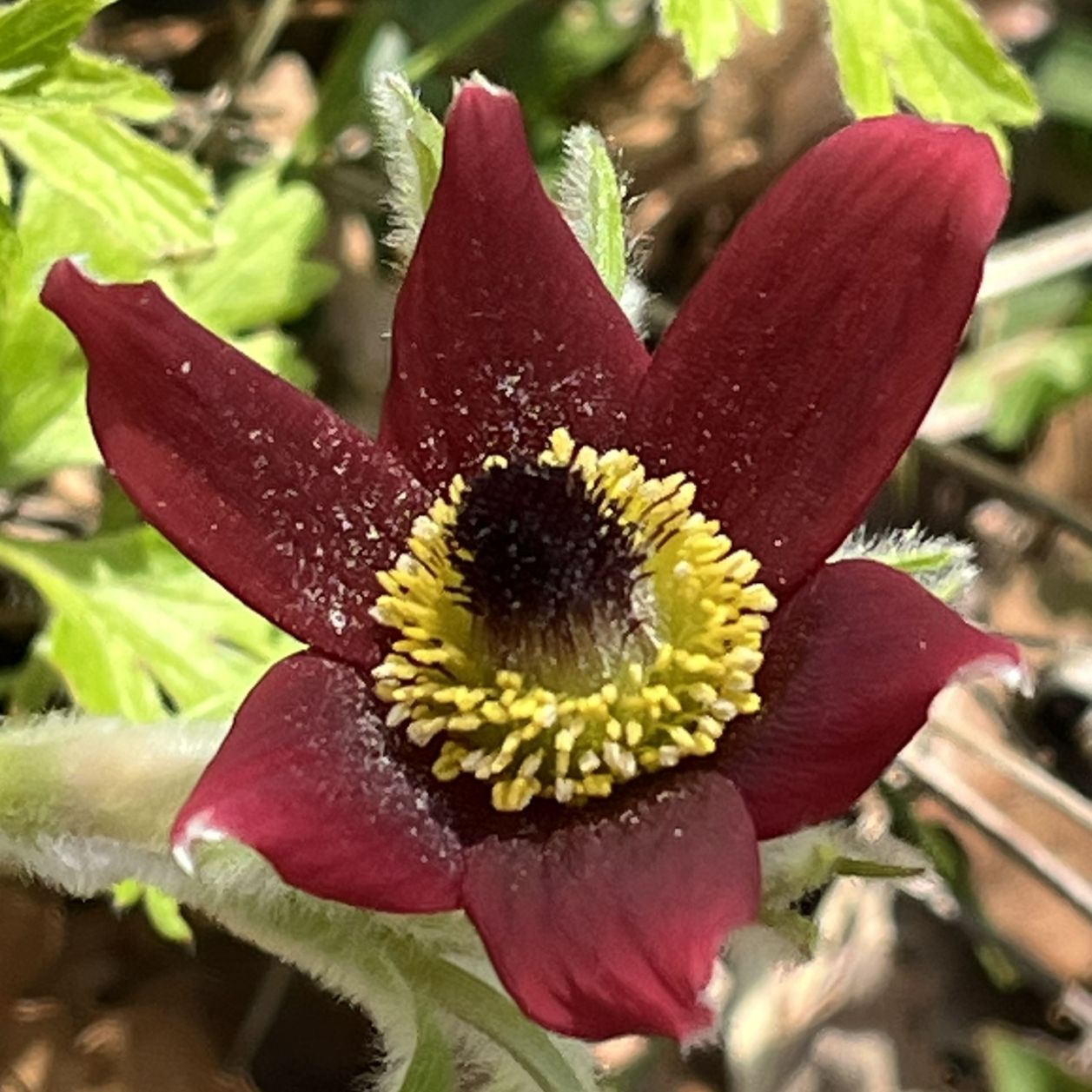オキナグサは咲き始めに下を向き、咲き終わりに上を向きます。花弁のような萼片が6枚、雄しべが多数。花後は綿毛で種子を風に乗せます。
Nodding Anemone flowers face down when they first bloom, and face up when they finish blooming. The flower has six petal-like sepals and many stamens. After flowering, the seeds are carried on the wind by fluff.
【仮名】オキナグサ, ハクトウソウ
【和名】翁草, 白頭草
【英名】Nodding Anemone
【学名】Pulsatilla cernua
【誕生】02/ 05, 03/ 07
【開花】04, 05月
【花色】Purple
オキナグサ
オキナグサの概要
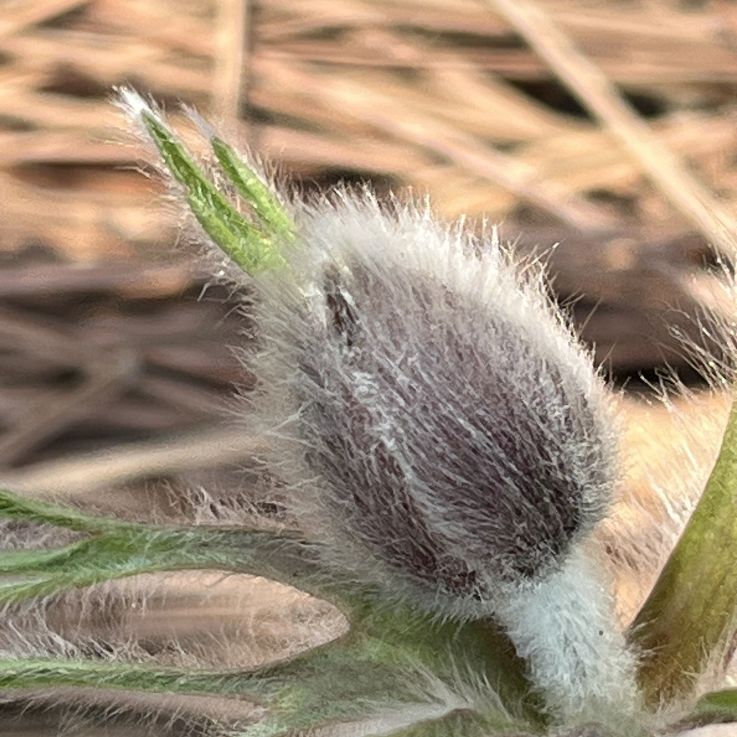
オキナグサはキンポウゲ科の多年草です。日本では本州、四国、九州、国外では朝鮮半島、中国の温暖地に分布。陽当たりの良い野原を好みます。昔は身近な野草でしたが、人々の暮らしが変わって野原も減り、今は絶滅が危惧されるまで衰退。「清純な心」という花言葉があります。
オキナグサの名前
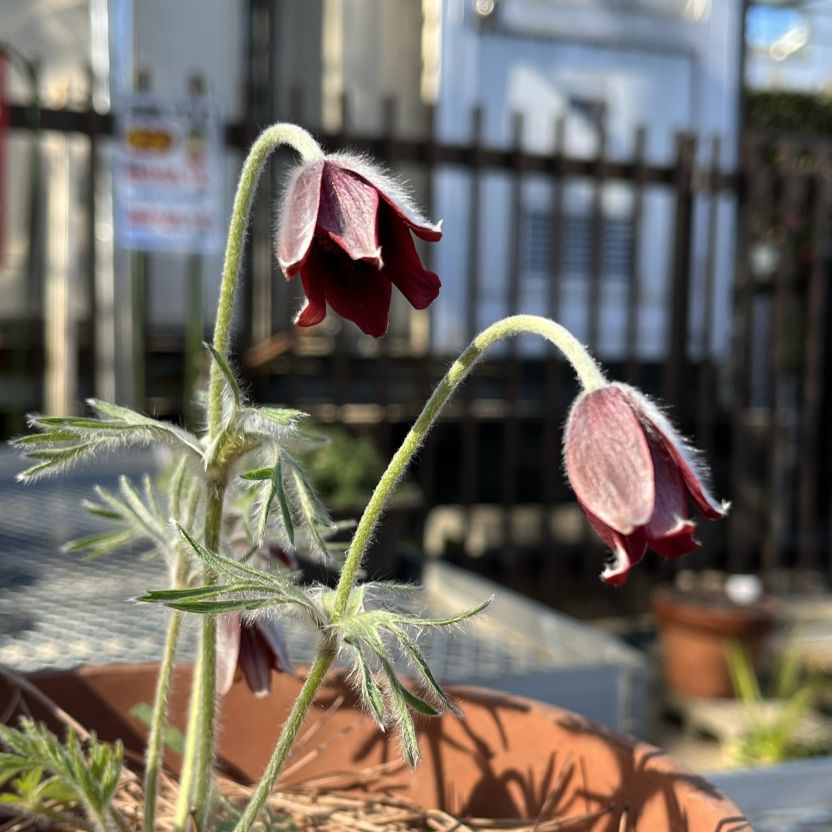
オキナグサの和名の由来は、「翁」の白髪のように、花後の痩果から長い綿毛が生える「草」だから。翁は「おじいさん」という意味です。一方、ラテン語の属名プルサティラは鐘を「打つ」「鳴らす」、種小名セルヌアは「前屈みの」という意味。鐘も前屈みも花の姿に由来します。
オキナグサの姿形
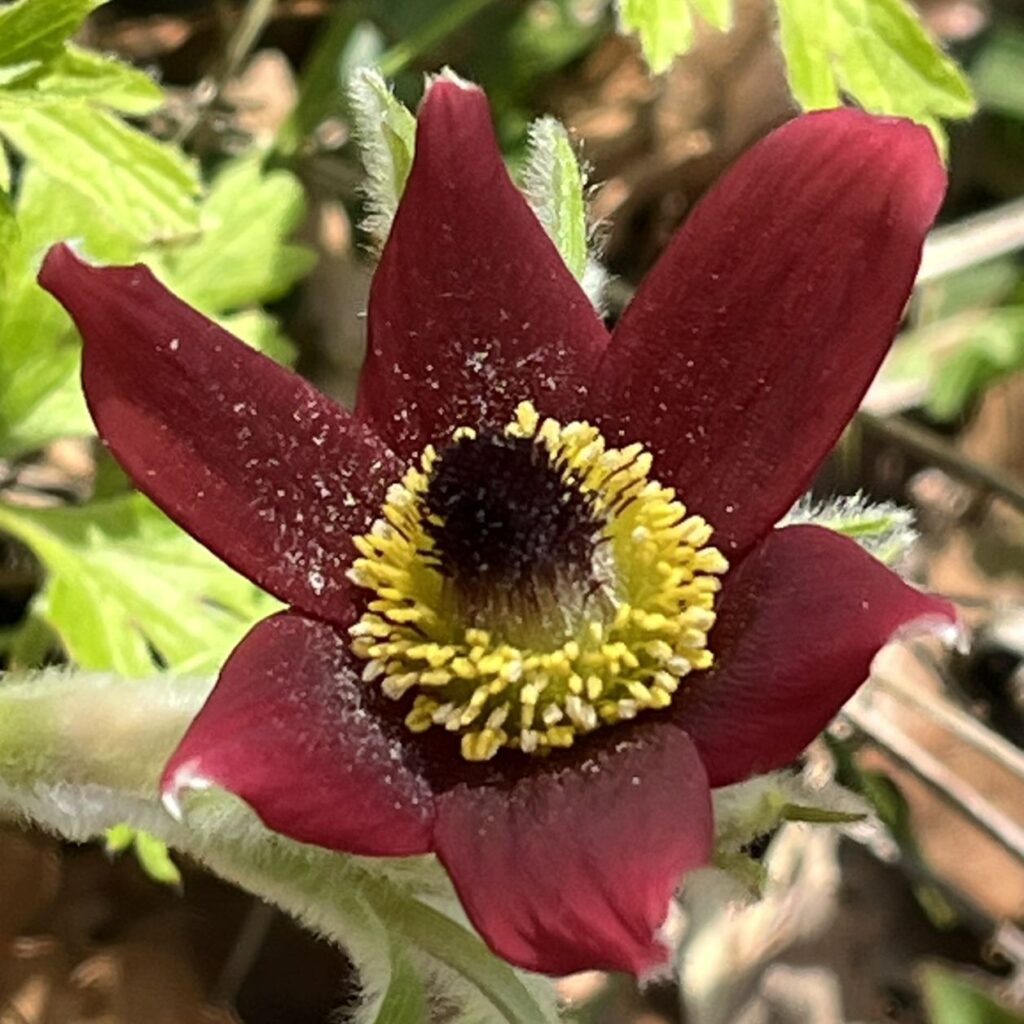
オキナグサは太い根茎を深く伸ばします。根生葉は柄が長く、2回羽状複葉で束生。茎生葉は柄がなく、3枚で輪生します。花は花弁のような萼片が6枚、雄しべが多数。咲き始めに下を向き、咲き終わりに上を向きます。花後は痩果を形成。雌しべ由来の綿毛で種子を風に乗せます。
オキナグサの近縁

オキナグサの近縁種「九十九草」は草丈が低く、北海道~本州の高山帯に分布。花が淡黄色で、陽が当たると咲きます。「西洋翁草」は草丈が高く、花が大きく、上を向いて咲き、欧州に分布。品種改良で白色、桃色、赤色、青紫色の花や八重咲きもあり、世界中で栽培されています。
Nodding Anemone
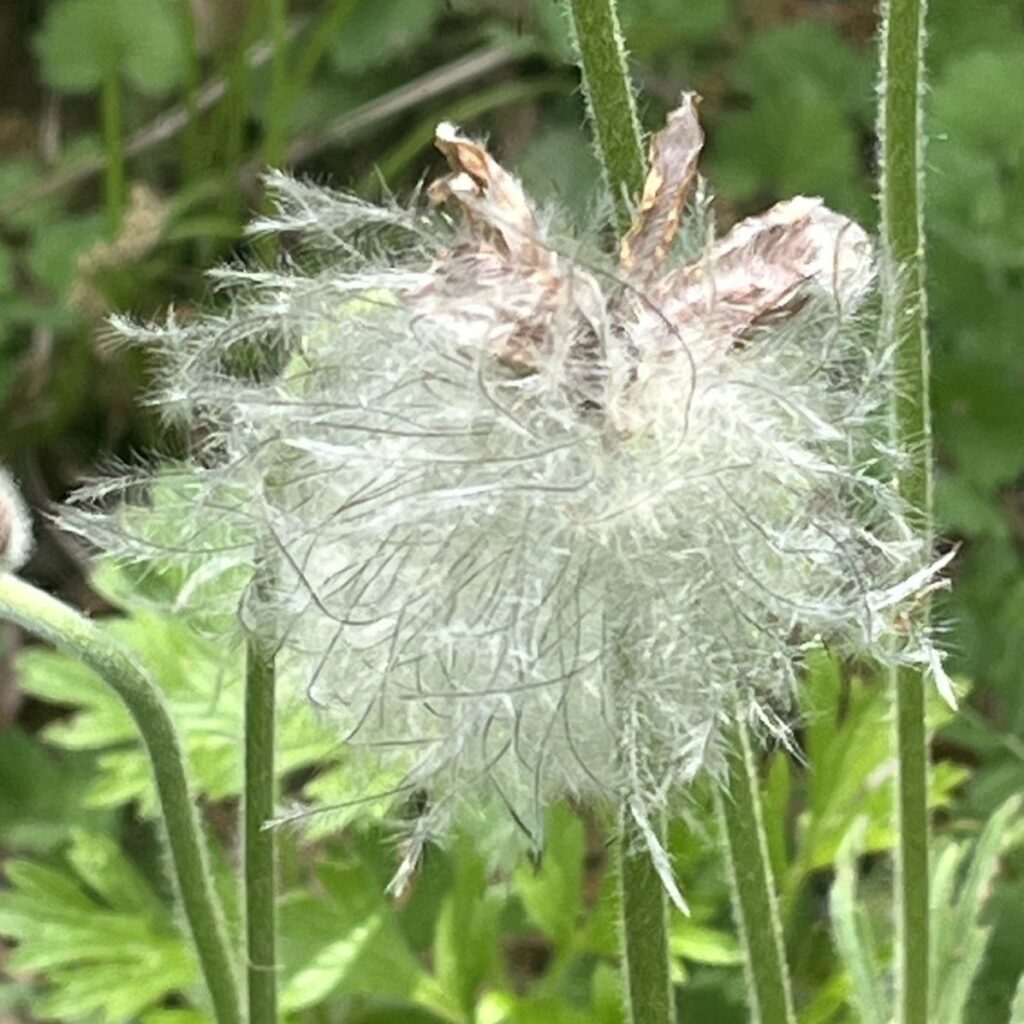
Nodding Anemone is a perennial plant of the Ranunculaceae family. It is found in Honshu, Shikoku, and Kyushu in Japan, and in the warm regions of the Korean Peninsula and China. It prefers sunny fields. It used to be a familiar wild plant, but as people’s lifestyles changed, the number of fields decreased, and it has now declined to the point of being at risk of extinction. Its flower language is “pure heart.”
The Japanese name for Nodding Anemone means “Grandfather’s Grass.” This is because long, white-hair-like fluff grows from the achene after flowering. Meanwhile, the Latin genus name Pulsatilla means “to strike” or “to ring” a bell. The specific name cernua means “bending forward.” The bell and the forward leaning are derived from the shape of the flower.
Nodding Anemone grows a thick rhizome that grows deep. The basal leaves have long stalks and grow in bundles of bipinnate compound leaves. The stem leaves are stalkless and grow in whorls of three. The flowers have six petal-like sepals and many stamens. They turn downward when they first bloom and turn upward when they finish blooming. After flowering, they form achenes. The seeds are carried on the wind by fluff derived from the pistil.
Pulsatilla nipponica, a close relative of Nodding Anemone, is found in the alpine zone from Hokkaido to Honshu. It has a short plant height, pale yellow flowers, and blooms when exposed to sunlight. Pulsatilla vulgaris is found in Europe. It has a tall plant height, large flowers, and blooms facing upward. It has been bred to produce white, pink, red, and blue-purple flowers, as well as double flowers. It is cultivated all over the world.

